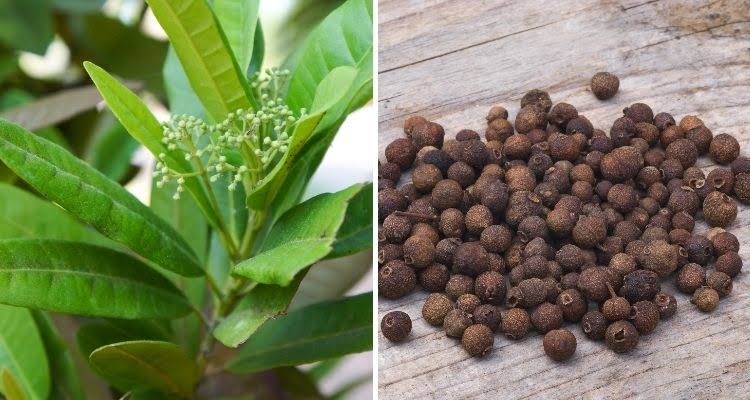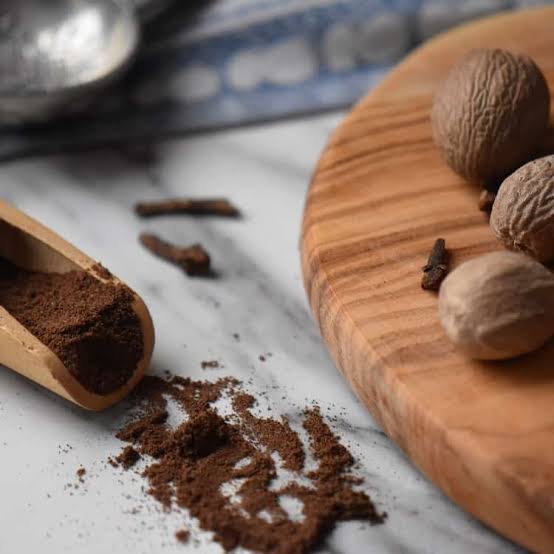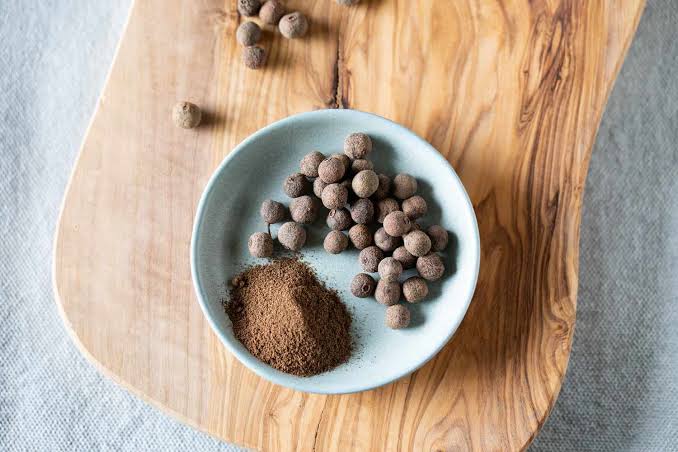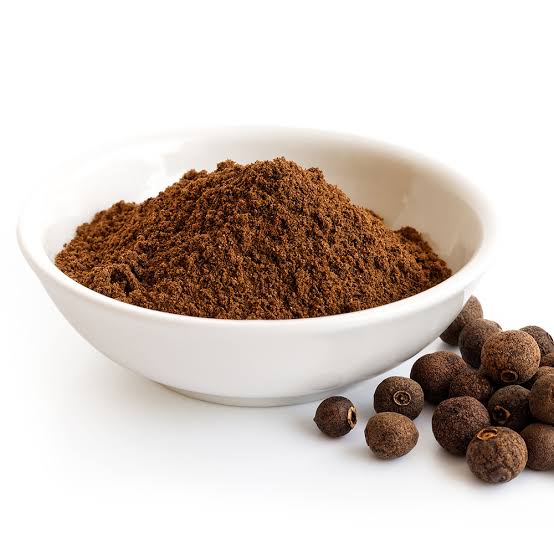Allspice seasoning is a spice that comes from a small tree native to the warm, tropical regions of Central America and the Caribbean. The spice is made from the dried, unripe berries of this tree and is known for its unique flavor and versatility.
Allspice got its name because it has a flavor that resembles a combination of several spices, including cinnamon, nutmeg, and cloves. This makes it a popular choice in many dishes, as it can add a complex and rich taste without the need to use multiple spices.
One of the great things about allspice is that it can be used in both sweet and savory dishes. In sweet dishes, it is often used in baking, where its warm and slightly spicy flavor can enhance the taste of cookies, cakes, and pies. It can also be found in many holiday recipes, like pumpkin pie and gingerbread cookies.
In savory dishes, allspice is a key ingredient in many traditional dishes from the Caribbean and Middle Eastern cuisines. It is often used in marinades for meats like jerk chicken and in spice rubs for barbecue. Its warm and earthy flavor pairs well with a variety of meats and vegetables.
Allspice is not only valued for its taste but also for its potential health benefits. It is believed to have antioxidant properties and may help with digestion. Some people even use it as a natural remedy for ailments like indigestion and nausea.
Using allspice in your cooking is quite simple. You can find it in most grocery stores in either whole berry or ground form. If using whole berries, you can grind them with a spice grinder or mortar and pestle before adding them to your recipe. Ground allspice is convenient and can be used directly.
In addition, allspice seasoning is a versatile and flavorful spice that can be used in a wide range of dishes, from sweet to savory. Its unique combination of flavors makes it a valuable addition to any kitchen, and its potential health benefits make it even more appealing. So, whether you’re baking a pie, grilling meat, or preparing a stew, consider adding a dash of allspice to elevate your culinary creations.
Read Also: Types of Fishing Methods
How to Grow the Allspice

Allspice is a wonderful spice that adds warmth and depth to many dishes, but did you know that you can grow it in your own garden? Yes, you can! Growing allspice at home is a rewarding experience that allows you to enjoy the fragrance and flavor of this versatile spice straight from your backyard. In this guide, we will walk you through the simple steps to grow and care for allspice plants.
1. Choosing the Right Location: To start your allspice planting, select a suitable location in your garden. Allspice plants thrive in tropical or subtropical climates, so ensure your area has warm temperatures year-round. They also prefer partial shade, so a spot with dappled sunlight or morning sun is ideal.
2. Preparing the Soil: Allspice plants love well-draining soil with good organic content. Prepare the soil by mixing in some compost or well-rotted manure. This will provide the necessary nutrients for healthy growth.
3. Selecting Allspice Varieties: There are several allspice varieties to choose from, but the most common is Pimenta dioica. You can find these plants at your local nursery or purchase seeds online.
4. Planting Allspice: Plant your allspice in the spring when the weather begins to warm up. Dig a hole twice the size of the root ball of your plant. Place your allspice in the hole, making sure it sits at the same depth as it was in the pot. Water thoroughly after planting.
5. Watering: Allspice plants like consistent moisture but don’t like to be waterlogged. Water them regularly, especially during dry spells, but avoid overwatering to prevent root rot.
6. Mulching: Applying a layer of mulch around your allspice plant will help retain soil moisture and control weeds. Organic mulch like straw or bark works well.
7. Pruning: Prune your allspice plant to maintain its shape and promote bushy growth. Remove any dead or diseased branches, and trim it back after the flowering season to encourage new growth.
8. Fertilizing: Feed your allspice plant with a balanced, slow-release fertilizer in the spring and again in late summer. Follow the instructions on the fertilizer package for the correct dosage.
9. Harvesting: Allspice berries are ready for harvest when they turn from green to a reddish-brown color. This usually occurs in the late summer or early autumn. Gently pick the berries by hand or with scissors. Allow them to dry in a cool, dry place for a few weeks before storing.
10. Storing Allspice: Store your harvested allspice berries in an airtight container in a cool, dark place. Ground allspice will lose its flavor faster than whole berries, so it’s best to grind them as needed to preserve the freshness and aroma.
By following these simple steps, you can enjoy the rich, aromatic flavor of homegrown allspice in your culinary creations. Growing allspice is not only a satisfying hobby but also a way to connect with nature and savor the joys of gardening. So, why not give it a try and add a touch of homemade allspice to your favorite dishes?
11 Health Benefits of Allspice Seasoning

Allspice seasoning offers not only a delightful flavor to your dishes but also several potential health benefits. Here are 11 health benefits associated with allspice seasoning:
1. Antioxidant Properties: Allspice contains antioxidants that help neutralize harmful free radicals in the body, reducing oxidative stress and the risk of chronic diseases.
2. Digestive Aid: Allspice has been used traditionally to aid digestion, alleviate gas, and soothe indigestion.
3. Anti-Inflammatory: The compounds in allspice may have anti-inflammatory properties, which can be beneficial for reducing inflammation and related conditions.
4. Pain Relief: Allspice contains eugenol, a natural compound with analgesic properties, which may provide pain relief when used topically or ingested.
5. Improved Circulation: Some studies suggest that allspice may help improve blood circulation, potentially benefiting heart health.
6. Immune System Support: Allspice contains vitamins and minerals like vitamin C, which can boost the immune system and protect against illnesses.
7. Antibacterial Properties: Certain components in allspice may possess antibacterial properties, which can help combat bacterial infections.
8. Anti-Fungal: Allspice may also have antifungal properties, assisting in the prevention and treatment of fungal infections.
9. Pain Management: Due to its analgesic properties, allspice may be used topically as a natural remedy to alleviate muscle aches and pains.
10. Respiratory Health: Allspice’s aromatic compounds can help ease congestion and promote clearer breathing, making it useful during colds and respiratory infections.
11. Weight Management: Allspice can add flavor to dishes without adding calories, making it a useful tool for those looking to manage their weight without sacrificing taste.
While allspice offers these potential health benefits, it’s essential to consume it in moderation as part of a balanced diet. Incorporating allspice into your cooking can not only enhance the taste of your meals but also contribute to your overall well-being.
Read Also: The Recommended Site for Sitting your Fish Farm
Allspice Berries

Allspice berries are small, round spices that come from the allspice tree. They are called “allspice” because they have a flavor that is similar to a combination of several other spices, like cinnamon, cloves, and nutmeg. Allspice berries grow in warm places like the Caribbean and Central America.
These little berries are very special because they can be used in lots of different types of food. People use them in baking, like in pies and cakes, because they give a warm and spicy taste. They are also used in savory dishes, like stews and sauces, to add a unique flavor.
To use allspice berries, you can either grind them into a powder or use them whole. When you grind them, they release a wonderful aroma that fills the kitchen with a cozy smell. You can sprinkle the powder in your recipes or even make your own spice blends.
Allspice berries are not just tasty; they also have some health benefits. Some people believe they can help with digestion and ease tummy troubles. They might even have antioxidants, which are good for your body.
In the past, allspice was very important to people in the Caribbean. They used it in cooking and even in some traditional medicines. Allspice berries were also traded by early explorers and became popular in many parts of the world.
However, allspice berries are a unique and flavorful spice that can make your food taste delicious. They have a warm and spicy flavor that reminds people of cinnamon, cloves, and nutmeg. You can use them in both sweet and savory dishes, and they might even have some health benefits. So next time you’re in the kitchen, don’t forget about these wonderful little berries.
Ground Allspice

Ground allspice is a spice made from crushing or grinding allspice berries into a fine powder. Allspice berries come from the allspice tree and have a flavor that’s a mix of cinnamon, cloves, and nutmeg. When ground, they release a strong and aromatic fragrance.
Ground allspice is a versatile spice used in various recipes. It’s commonly found in both sweet and savory dishes. Here are some commom ways ground allspice is normally used:
1. Baking: Ground allspice is a key ingredient in many baked goods like pies, cakes, and cookies. It adds a warm and spicy flavor.
2. Seasoning: It’s often used as part of spice blends, especially in Caribbean and Latin American cuisines. It pairs well with other spices like cinnamon, cloves, and black pepper.
3. Sauces and Marinades: Ground allspice can be used to season sauces, marinades, and rubs for meats, giving them a unique flavor profile.
4. Soups and Stews: Some savory dishes, particularly in Caribbean and Middle Eastern cooking, call for ground allspice to enhance their taste.
5. Pickling: It’s used in pickling brines to add depth of flavor to pickled vegetables.
In addition, ground allspice is a convenient way to enjoy the warm and spicy flavor of allspice berries in your cooking. Whether you’re baking desserts, preparing savory dishes, or experimenting with different cuisines, ground allspice can be a delightful addition to your spice collection.
Whole Allspice
Whole allspice is a kind of spice. It comes from a tree called Pimenta dioica, which is native to the West Indies. People use it to add flavor to food. It looks like small brown balls, and they are dried berries from the allspice tree.
People use whole allspice in cooking because it has a special taste. It’s a bit like a mix of different spices, like cloves, cinnamon, and nutmeg. This makes it very versatile in the kitchen, and it can be used in both sweet and savory dishes.
Whole allspice is easy to use. You can put the whole berries in your food while it cooks. They will give a nice flavor to soups, stews, and sauces. You can also grind the whole allspice to make a powder. This powder is great for seasoning meat or adding to desserts like pies or cookies.
Whole allspice has been used for a long time, even by ancient people. They used it for its taste and also believed it had medicinal properties. Some people still use it today for natural remedies, like making teas for digestive problems.
In summary, whole allspice is a versatile spice with a unique flavor profile. It comes from the allspice tree and can be used in various dishes to enhance their taste. Whether you use the whole berries or grind them into a powder, whole allspice can add a special touch to your cooking.
Read Also: 12 Freelance Skills that are in the Highest Demand
